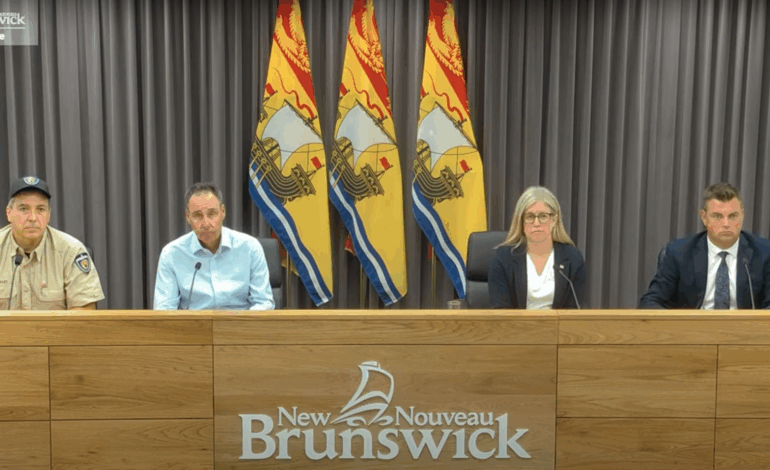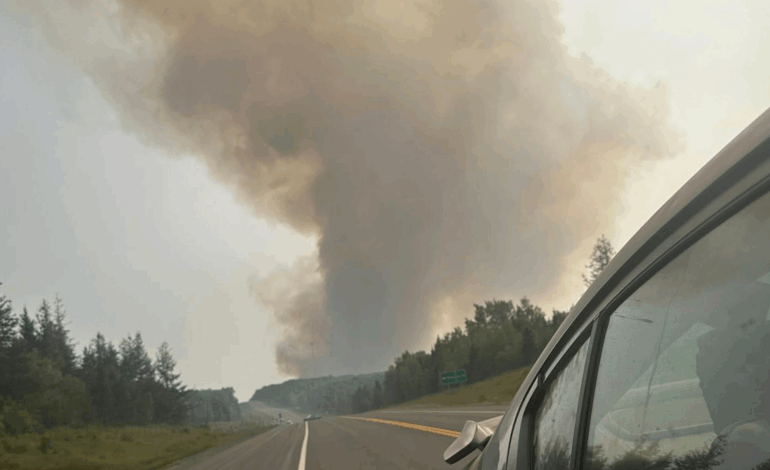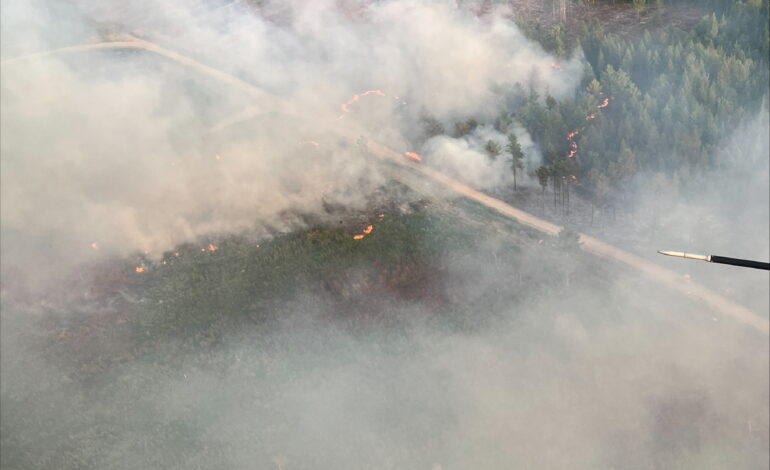
The province issues a bans all activity on Crown land and asks the public to stay out of the woods given the “unprecedented” wildfire circumstances.
The province of New Brunswick has issued a ban on all activity on Crown land on the afternoon of Saturday, Aug. 9 due to the high risk of wildfires.
In addition to the existing fire ban and the ban on the use of Crown land the province is asking New Brunswickers to stay out of the woods and reconsider their travel plans.
“We are here to ask all New Brunswickers to get out of the woods and stay out of the woods,” said Premier Susan Holt during the announcement.
The ban includes a prohibition on Crown land of hiking, fishing, camping, and the use of vehicles.
“Camping is allowed only in campgrounds but the public is being asked to consider their camping plans until such time that the forest risk decreases,” said Minister of Natural Resources, John Herron.
“There could be a fine of $140 plus the surcharge, $172.50,” said Minister of Justice, Rob McKee, of where the provision currently stands. He said this fine is in accordance with the Crown Land and Forest Act and that if someone is found to be the cause of a fire they will be responsible for the costs to put the fire out, up to a maximum of $250,000.
“We are here today to encourage New Brunswickers to take actions that will protect our forestry assets, our communities, our firefighters, and above all: our families,” said Herron.
Holt said the province is in an unprecedented situation and it is getting worse. With no significant rainfall since early July and many areas of the province experiencing 50 per cent less precipitation than normal, Herron said he does not expect conditions to change until August 17.
Herron also added that the Department of Natural Resources (DNR) has not observed a drying situation as severe as this since 1986.
He said given the current situation, if a fire is not accessed within five to ten minutes it could spread rapidly. This is compared to normal circumstances of around 30 minutes.
While Holt said the province is not officially banning the public from accessing all forests, like the province of Nova Scotia, she is urging New Brunswickers to look out for their neighbours and stay away from the woods for the time being.
This announcement comes as the “Old Field Road” wildfire in the Miramichi region is labeled as “uncontrollable.” This fire has been designated as a class 6, which means the wildfire is beyond control of the province’s resources.
This does not mean that the province lacks the appropriate resources but that the wildfire will not be contained by any measures provided. It is now, at the time of publishing, 240 hectares or nearly 600 acres. This is up from 160 hectares the morning of Aug. 9 according to the province.
There are other fires active in the province although at the time of the announcement, all but the “Old Field Road Fire” are under control. This includes an event near Harvey on the evening of Aug. 8 that is now under control as it was able to be accessed within about 10 minutes, according to Herron.
He said the short response time is indicative of the province’s resources ready to tackle fires when they come up but that the conditions leave the situation on high alert.
Along with the province’s fleet of airtankers, two additional skimmer planes from Quebec have been sent to deal with the situation.
“New Brunswickers are asked to stay away if they see planes near water for the safety of the pilots or themselves,” said Herron.
“Although no evacuation orders have been issued, every household needs an evacuation plan and an emergency preparedness kit,” said McKee.
He said that every household needs to know what to do in case of a wildfire. He went on to say that New Brunswickers should monitor local information and pay attention to the New Brunswick Fire Watch website regularly.
The province’s Fire Watch website is updated on a regular basis with the most current and accurate information regarding the wildfire situation in the province.
McKee said New Brunswickers should be ready to evacuate with transportation and an emergency preparedness kit containing the essential supplies necessary.
“The shelter locations will be communicated in relation to the areas that have been exposed,” said Holt.
She said the province engages municipal infrastructure like halls and gyms depending on what is accessible. As the need for shelters becomes clear in areas where there are evacuation orders the province will communicate that through their official channels.
McKee said the threshold for using the Alert Ready system has not been met but the province is ready to do so if needed.
“The report that was just recently released with respect to Stein fire itself and that really is the guideline,” said Herron.
He said the recommendations provided in the after-action report of the Stein Lake fire are guiding the decisions being made during the current situation.
At the time of publication the Municipality of Saint Andrews has asked the public to refrain from using the trails until conditions improve or an official decision to close the trails is made by council.




